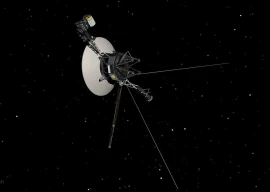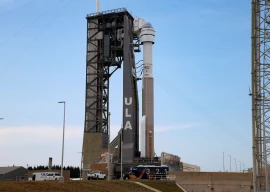
The indications that rocks gathered by Chang'e 5 lander on the moon have water in them have been confirmed following their testing on earth, Chinese scientists have found.
The scientists shared their discovery in a piece published in the Nature Communications this week, RT reported.
The lunar lander had made its landing on the moon in December 2020 when it gathered about 1.7 kilogrammes of regolith, a mixture of rocks and lunar soil.
In measuring the chemical composition of the material found, the craft used its on-board tools to draw a conclusion.
The data enabled the researchers to determine that water molecules may exist in some 120 parts per million on some of the rocks and at 180 parts per million in others.
Also read: China plans to go to the Moon, Mars and beyond
In the fresh development, a team representing the Chinese Academy of Sciences confirmed existence of water in the samples while studying the samples brought back to earth.
Interestingly, the sample of soil studied by the experts turned out to be comparatively dry, to analyse it even by the lunar standards, as it showed 28.5 parts per million water levels.
They also found that mineral apatite, which was also among the samples, boasted a water content of 179ppm, a finding consistent with earlier predictions.
It is pertinent to mention that observations made from the telescope and satellites led experts in the past to suspect the presence of water in the moon rocks in the form of hydroxyl or H20.
It is hoped that experts such as astronauts and cosmonauts will be able to derive molecular oxygen and hydrogen from the environment so as to produce water and oxygen for their use.

1732274008-0/Ariana-Grande-and-Kristin-Chenoweth-(1)1732274008-0-165x106.webp)



1732273396-0/Copy-of-Untitled-(72)1732273396-0-270x192.webp)
1732269802-0/Copy-of-Untitled-(71)1732269802-0-270x192.webp)
1732261957-1/Copy-of-Untitled-(66)1732261957-1-270x192.webp)


1732258132-0/BeFunk_§_]__-(26)1732258132-0.jpg)










COMMENTS (2)
Comments are moderated and generally will be posted if they are on-topic and not abusive.
For more information, please see our Comments FAQ